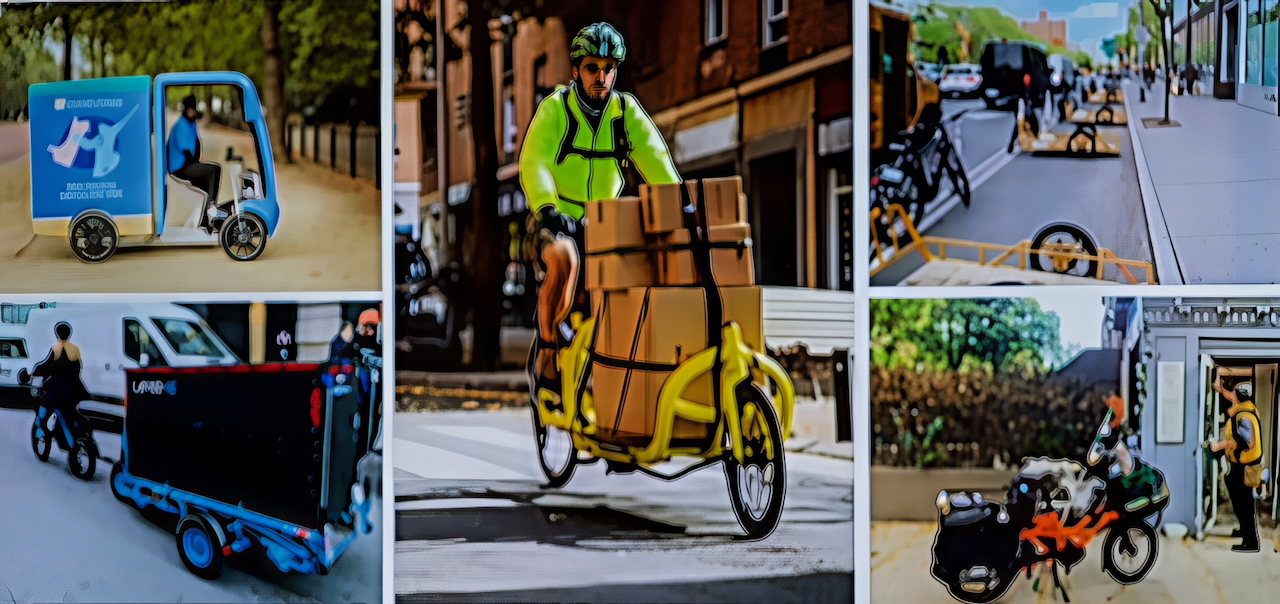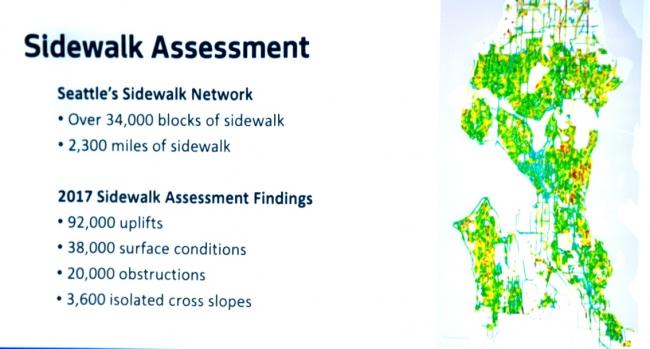Seattle City Council Transportation Committee tackles sidewalk repairs and rolls out E-Cargo Bike program
Seattle has 2,300 miles of existing sidewalks, over 34,000 blocks. The Sidewalk Safety Repair program aims to make sidewalks safe and accessible, primarily repairing damage caused by SDOT street trees or those adjacent to city-owned property.
Tue, 09/02/2025
The Seattle Transportation Committee of the Seattle City Council convened on September 2nd, 2025, for a crucial meeting that saw discussions on vital city infrastructure and innovative transportation solutions. Chaired by District 1 Councilmember Rob Saka, the committee addressed the ongoing challenges of the city's extensive sidewalk network and introduced a pioneering e-cargo bike permit program aimed at boosting climate goals and urban delivery efficiency.
Focus on Sidewalks: Repair, Construction, and Equity Concerns
The meeting dedicated significant time to the Seattle Department of Transportation (SDOT)'s sidewalk program, covering both new sidewalk construction and the critical Sidewalk Safety Repair Program (SSRP). Bill Lort highlighted that the recently approved transportation levy allocates $111 million over eight years for new sidewalks, targeting 320 blocks, with 250 planned for the first four years. SDOT has already started neighborhood walkshops to prioritize new sidewalk locations and expects to deliver 40-50 block faces of new sidewalk by the end of 2025.
Jenny Green, leading the SSRP, explained its role in overseeing the maintenance of Seattle's 2,300 miles of existing sidewalks across over 34,000 blocks. The program aims to make sidewalks safe and accessible, primarily repairing damage caused by SDOT street trees or those adjacent to city-owned property. SDOT uses a condition rating system (excellent, good, fair, poor, very poor) for project selection and prioritization, informed by a 2017 data collection effort.
A 2021 audit and a University of Washington report led to six key recommendations for improving sidewalk repair, including:
• Streamlined enforcement methods
• Exploring a by-bill repair ordinance
• Implementing a sidewalk repair financing program
• Instituting an income-based cost-sharing program
• Implementing a five-year sidewalk shim and bevel plan
• Simplifying the permitting process for property owners
The last two recommendations have been implemented through proactive beveling and an updated online guide, while a task force is developing strategies for the first four.
A significant challenge highlighted is the estimated backlog of $1.3 billion needed to fully repair all sidewalks and remove obstacles, including those adjacent to private properties, to bring them up to ADA compliance. Property owners are responsible for maintaining sidewalks next to their property, a fact SDOT works to educate the public about through notice letters and resources.
SDOT employs innovative solutions and a comprehensive prioritization model for repairs, considering:
• Safety, mobility, impairment, cost, and usage (proximity to schools, transit, hospitals).
• Leveraging opportunities with ADA curb ramp and larger paving projects.
• Geographic and social justice distribution using the Race and Social Equity Index map.
• Addressing emergent repair needs, such as damage from the February windstorm.
An example of innovation is the pilot use of aluminum plates that bridge over large tree roots, replacing standard concrete to preserve tree health while making sidewalks accessible. The program's goal under the new levy is to achieve 34,000 spot repairs over eight years, averaging 4,250 per year.
During the discussion, Council Member Rinck inquired about incorporating low-carbon concrete technology and engagement with the disability commission. SDOT confirmed they are already using green carbon options in their concrete specifications, recycled concrete, and are exploring new vendors. They also work closely with the department's ADA program lead, who consults an advisory council from the disability community, and are integrating sidewalk repair into the overall ADA transition plan.
Council Member Kettle emphasized the need for new sidewalks in underserved districts for equity, while also raising concerns about sidewalk-related litigation risks and the challenges posed by large, privately planted trees in planting strips. SDOT noted that proactive beveling and quick response to reported uplifts help mitigate litigation risks, and they educate property owners on appropriate tree selection and permitting. The department acknowledges the high costs associated with managing mature trees that damage sidewalks, an expense often beyond a homeowner's means, but currently has no specific policy to assist with this.

E-Cargo Bike Permit Program: A Step Towards Sustainable Delivery
The committee also heard a presentation on the proposed e-cargo bike permit program, led by Katherine Rice and Mike Estey from SDOT. This initiative is closely tied to the city's climate agenda, as transportation accounts for 58% of Seattle's total emissions, with freight being the "dirtiest" sector. The program aims to decrease congestion, create safer streets by limiting double parking, and foster partnerships with local businesses.
The legislation proposes three key actions:
1. Establishing a legal vehicle definition for commercial electric cargo bikes in city code, allowing for two, three, or four wheels, a maximum width of 48 inches (fitting protected bike lanes), a maximum power output of 750 watts, and a speed limit of 15 miles per hour.
2. Opening up curbside access in business and residential areas, including time-limited, load zones, paid, restricted, and unrestricted parking zones, to allow bikes to park safely close to their final destinations.
3. Creating a formal permit structure through SDOT's traffic permit counter, requiring a valid business license and a permit plate on the bike. An annual fee of $100 per bike is proposed, with the first six months waived to encourage participation, especially from small-to-medium businesses.
SDOT plans to collect data on packages delivered, vehicle miles traveled, and operational areas to inform future program growth. Opportunities for the program include incident response, supporting local businesses like Pagliacci Pizza, attracting large freight partners such as Amazon and DHL, and exploring a "lending library" model to reduce adoption barriers for small businesses. The program aims to launch by Q4 of this year or Q1 of next year.
Council Member Kettle supported the program but raised concerns about e-mobility devices operating unsafely on sidewalks and distinguished cargo bikes from "human cargo" e-taxis, suggesting parallel legislation for the latter. SDOT clarified that the program's design, with designated curb parking, intends to keep cargo bikes off sidewalks and that human-carrying devices would be regulated elsewhere. Council Member Rinck affirmed the program's proactive nature and alignment with the city's transportation electrification plan, noting collaboration with Seattle City Light on collocated charging infrastructure and microhub concepts. She also inquired about the 48-inch width fitting most bike lanes, which SDOT confirmed is generally the case for protected lanes, and the rationale behind the $100 flat annual fee, which is discounted compared to commercial vehicle load zones and aims to recover costs while encouraging adoption.
Chair Saka praised the program as "exciting, innovative, and super cool," emphasizing its role in supporting last-mile connections and economic vitality, and asked about lessons learned from other jurisdictions, to which SDOT highlighted the need for ample curb access and flexibility in vehicle form factors due to a rapidly developing market.
The committee is set to vote on the district project fund resolution and e-cargo bike legislation at its next meeting


